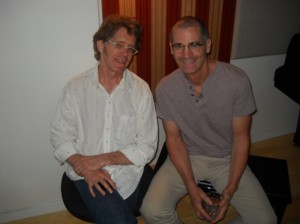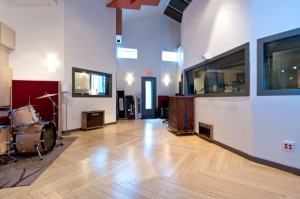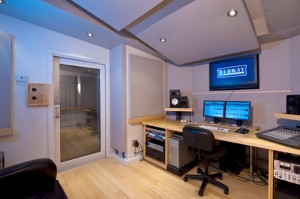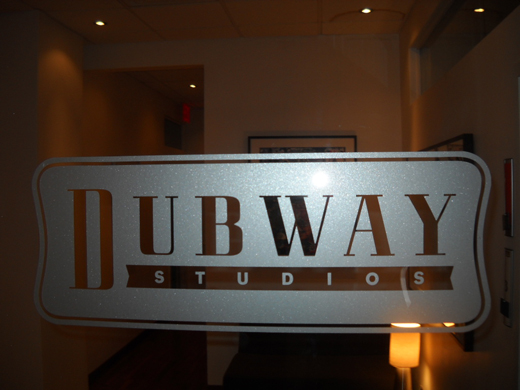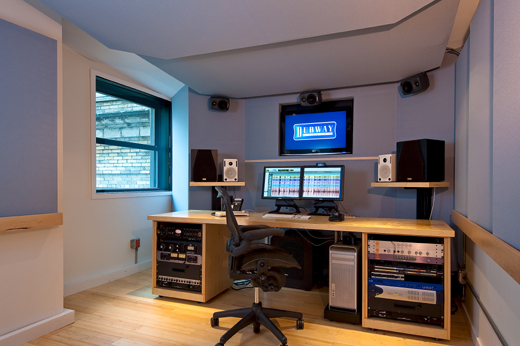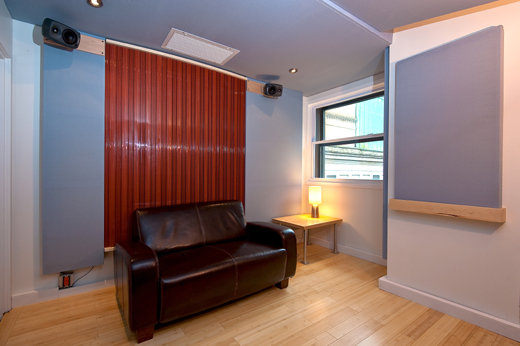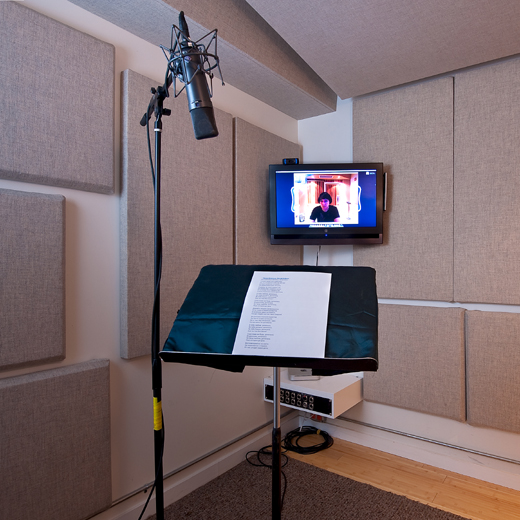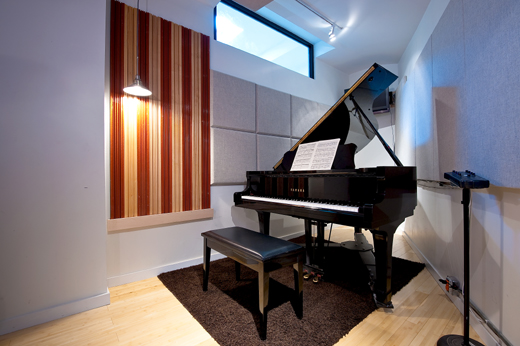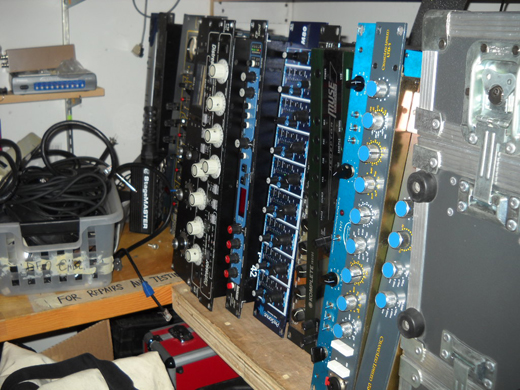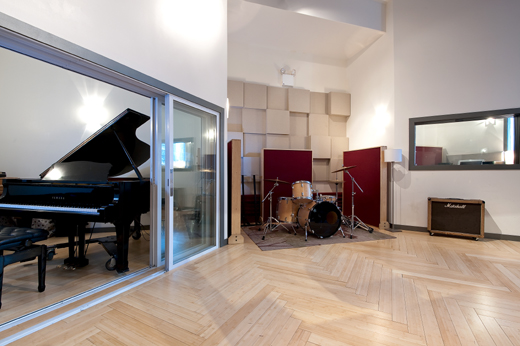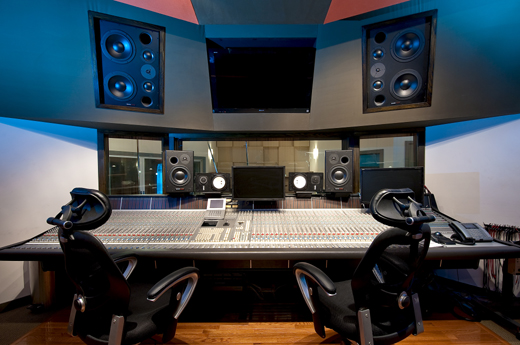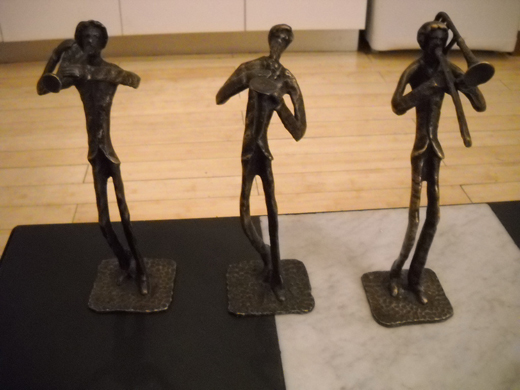Dubway Studios: Relocation, Rebuilding, and Renaissance
FINANCIAL DISTRICT, MANHATTAN: Putting a new spin on a classic can be a very risky endeavor. Unless you have no choice, that is – in which case you may as well gyrate away with everything you’ve got.
That’s the exact challenge that Mike Crehore and Al Houghton, the founders of Dubway Studios, willingly took on in 2010. Having been given a long-distance heads up that the lease on their Chelsea recording warren would not be renewed, the pair made the daunting decision to relocate and rebuild – not an easy call after a decade-plus of constant refinements had established your studio as a dependable choice for music recording, mixing, and audio post clients of all stripes.
But after a serious think, Houghton and Crehore – who had first met in 1983 when both had overbuilt one-room facilities in the famed Music Building on 8th and 38th,before opening up their Chelsea studio in 1997– decided they were game. And if they were going to do it again, they reasoned, why not get it right this time? REALLY right.
“By the time you’ve built your third studio, you know what you’re doing,” grins Houghton, surrounded by the clean, artistic lines of the latest Dubway Studios, which now resides at 42 Broadway. “What all that experience taught us to do was build something that can work together and serve the most possible applications — from recording to post to audio books.
“In that sense, it’s about providing flexibility by learning what the clients want, and what the engineers who work here need. Whether you’re talking about monitor height, what gear should be in the room, or what shouldn’t be in the room, these are things you can only really do if you’ve been through it.”
Sonic Architecture
Exploring the latest Dubway Studios, Financial District Edition, which has been up and running since early 2011, Crehore and Houghton’s experience – an impressive 30 years of combined NYC studio ownership – is something you can feel. Unstressed feng shui, sunlight, and a serene sense of functionality pervades Dubway’s Main Floor, where light woods and visual art create a calming headspace that enables the clients, engineers, and talent to maximize the hours spent there.
The Main Floor of the complex that this positive energy pervades is centered around three control rooms, accompanied by two VO/instrument overdub booths, and a larger triangular grand piano room with plenty of space to hold a drum kit if needed. It’s an ideal atmosphere for small-scale tracking and music mixing for indie artists, as well as stereo and 5.1 surround mixing for Dubway’s numerous audio broadcast and film audio post clients — which have included HBO, Discovery Channel, Nick Jr., PBS, Showtime, McDonalds, iTunes, IFC, NFL Films, Twentieth Century Fox, and many more.
But the highly efficient Main Floor is only half the story at Dubway. In an innovative arrangement, Dubway shares the impressive penthouse Mezzanine studio with Engine Room Audio, which originally constructed the 1100 sq. ft. recording space and operates its own busy studios adjacent to Dubway. With 20 ft. ceilings, large iso booths of its own, and an SSL 4064 G+ console, the Mezzanine gives both businesses a no-compromises recording resource for its major label and indie clientele, while mitigating a massive overhead that would be prohibitively costly for either to shoulder on their own.
With a room of that scale in the mix, Dubway continues to build confidently on a music recording portfolio that includes Antony & the Johnsons, Devendra Banhart, Patti Smith, They Might Be Giants, David Byrne, Cyndi Lauper, Dar Williams, Alicia Keys, Joseph Arthur, Dan Bern, Richard Barone, and Cat Power, to name just a few.
The result: a highly flexible facility that serves Dubway’s clients and engineering staff more effectively than the Chelsea location, which had charm — but also plenty of quirks, as that multiroom studio was constantly retrofitted and built out, to mesh with the additional audio verticals that Dubway added on to its service offerings.
Supporting Multiple Revenue Streams
Today, Dubway Studios has mastered a wide range of revenue streams that many other studios would envy. The facility has successfully positioned itself as a leading provider of audio post for TV, with mixing, sound design, and VO recording accounting for nearly half of their billable hours. From there, the list includes healthy doses of music recording/mixing, audio books, and remote recording (such as the iTunes “Live from SoHo” series). A relatively recent addition is location audio, with Dubway personnel going onsite with boom mics and lavaliers to provide top-quality audio to TV, reality shows, and film clients.
Once the two industry veterans had settled on the space at 42 Broadway as their next professional home, Crehore explains the thought process for designing it. “We started with an existing footprint of rooms and said, ‘We could make this work as three control rooms and some live spaces.’ We knew we also needed a lobby, a tech room where the assistants and interns could hang out and store the gear, and minimal office space. So when we walked through and saw what was going on we said, ‘How do we make this as flexible as possible?’”
Instead of knocking down walls or fighting physics, Crehore – an experienced builder and woodworker – carefully evaluated each of the existing rooms, calculated maximally inclusive listening and viewing angles for engineers and clients, then created custom mixing desks that would best enable it all. Floors were all floated and extended to the full room or not as space and interior/external noise considerations dictated — both VO rooms are quieter than anything they have ever worked with, and roomier as well. Additionally, audio tielines, and a hybrid system of high-resolution security cameras and iChat, can connect any room to any other in the facility.
Although they have different proportions, each control space – nicknamed “The Red Room”, “The Blue Room,” and “The Sandbox” – is designed to shoulder the same load. Equipped with Pro Tools HD3 systems, Dangerous Music monitoring systems, and Genelec or Yamaha monitors in stereo and/or 5.1 surround configurations, the rooms are intimate, but still give Dubway’s engineers sufficient space to craft a highly accurate mix while hosting clients.
Speaking of engineers, Dubway’s longevity in the NYC recording scene has made it a key breeding ground for some of the city’s top talent – many of who have stayed loyal to the facility for years. On any given day, Houghton and Crehore may be joined in battle with Operations Manager Brandon Hollely, Remote Recording Manager & Chief Engineer Jason Marcucci, along with Keith Rigling, Chris Abell, Mike Judeh, Stephen Schappler, Chris Camilleri, Chris Montgomery, and Josh Tucker. Assistants Josh Friedman and Josh Burnette are also onsite. Eric Spring, John Thayer, and Anthony Gibney were all active Dubway engineers who recently moved overseas, and the producer/engineer/mixer Emery Dobyns (Travis, Fran Healy) is an alumni of the system.
Live Room Sharing 101
Whomever at Dubway is working a session in the Mezzanine upstairs, they’re part of a team that has learned to accomplish something tricky — but which may be increasingly important for studio survival in NYC: the aforementioned sharing of a live room.
As Houghton points out, making the system work starts with the intangibles. “Ultimately, there’s a lot of trust and mutual respect in sharing a room,” he says. “Everyone’s gear is in there, everyone’s using it, and it’s easy to be very overprotective of that stuff. At first Engine Room and Dubway were all nervous about it, like, ‘What if the other guy books it out for the whole year?’ But as it turns out, the bookings are easy to work around each other. Our staffs have been cultivating a rapport, so booking from one session to another is seamless. And we’ve also all learned how to zero out the space so everyone is comfortable with it.”
And while Dubway Studios and Engine Room may have their own distinct corporate cultures and clientele, Google has served as the Great Logistical Unifier for Everybody (GLUE). “We have a Google calendar we share with each other, and there’s also a ‘Mezz Board’ Google group that we collaborate on,” Crehore adds. “So if there’s a piece of gear that everyone needs to know about, then that comes up on the Mezz Board: ‘Channel 23 of the SSL is funky today!”, and everyone avoids it. Everyone sticks to the system, and it works.”
Mainland: Manhattan
While there’s an undeniably building buzz about Brooklyn studios the Dubway trail reminds that, for some, Manhattan will always be an essential address.
“A good deal of the business that we get is due at least partly to the fact that we’re in Manhattan,” Mike Crehore confirms. “A lot of our clients live in Brooklyn, but especially when it comes to audio post their business and offices are still in Manhattan – so the new location actually became an easier commute for some of our clients.”
It’s also intriguing — and not a little bit inspiring — that this sage and savvy studio tandem committed to building their third facility after what must have been the deepest of gut checks. Then they delivered, with a lean and mean full-service studio that’s as technically proficient as it is appealing.
“The bottom line is we love this business,” says Al Houghton. “We’re musicians ourselves and we love working with musicians, and the creatives doing the TV shows. There’s a great crew to collaborate with here, and that’s always a fun adventure. This business is not for the faint of heart. But it is satisfying.”
– David Weiss
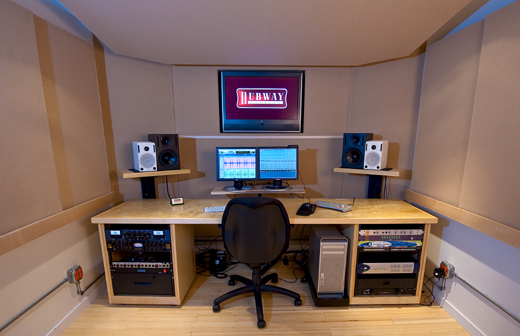
Each control room fits right in for audio post and music mixing. Note the desk custom made for the room.
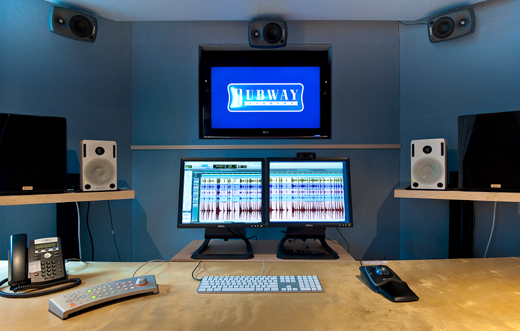
Up close on the command view -- clean lines and lack of clutter make the Dubway rooms hospitable for long sessions.
Please note: When you buy products through links on this page, we may earn an affiliate commission.







